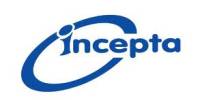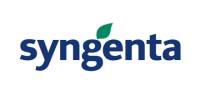SWOT Analysis of Human Resources in Orient Energy Systems Limited
Human resource management (HRM) is the strategic and coherent approach to the management of an organization’s most valued assets – the people working there who individually and collectively contributes to the achievement of the objectives of the business. The terms “human resource management” and “human resources” (HR) have largely replaced the term “personnel management” as a description of the processes involved in managing people in organizations.
The goal of human resource management is to help an organization to meet strategic goals by attracting, and maintaining employees and also to manage them effectively. The key word here perhaps is “fit”, i.e. a HRM approach seeks to ensure a fit between the management of an organization’s employees, and the overall strategic direction of the company (Miller, 1989).
Orient Engineering and Services Consultant were formed by a group of highly experienced and ambitious engineers of the industry in 1996 in Pakistan. In the year 2003 Jenbacher Energy manufacturer of world’s most advanced gas engines became part of General Electric (GE Energy) and since then the product is called GE Jenbacher.
In 2003, it entered into Bangladesh market and operating by Orient Energy Systems Ltd. Bangladesh (OESL). At present, OESL providing the most economical and reliable energy solution to the industry by utilizing proven and latest concepts of engineering and technology through most advanced piece of equipment of novel design duly backed up by knowledge and experienced professional engineers and technicians.
The company does not have a standard motivational process except verbal appraisal. The company does not provide any standard reward system to reward its employees. It provides a satisfactory annual leave, sick leave and casual leave. Besides these the company has kept the opportunity for the employees to have extra leave for emergency situation. The company provides employees not only according to the standard scale but also some additional services like transport facilities, cell phones, foods etc.
The company is providing 3S (Sales, Spares and Service) and Operation & Maintenance. So it requires these types of people to match its requirement. So there should be a great necessity of HRM. Unfortunately, it does not have any such strong department Though HRM is said to be the most important issues in present days actually in this area of a business organization there is the highest contradiction and conflict between theories and actual life practices. Management, particularly human resource management, in real life is not that easy like the theories.
As being an employee, I am going to discuss about the recruitment and selection process of Orient Energy Systems Ltd. Bangladesh.
SWOT Analysis of Orient Energy Systems Ltd.
The overall evaluation of a company’s strength, weakness, opportunities and threat is called SWOT Analysis.
SWOTAnalysis is a tool for auditing an organization and its environment. It is the first stage of planning and helps marketers to focus on key issues. SWOT stands for strengths, weaknesses, opportunities, and threats.
The SWOT analysis provides information that is helpful in matching the firm’s resources and capabilities to the competitive environment in which it operates. As such, it is instrumental in strategy formulation and selection.
- Strengths and weaknesses are internal factors.
- Opportunities and threats are external factors.
The internal factors may be viewed as strengths or weaknesses depending upon their impact on the organization’s objectives. What may represent strengths with respect to one objective may be weaknesses for another objective. The factors may include all of the 4P’s; as well as personnel, finance, manufacturing capabilities, and so on. The external factors may include macroeconomic matters, technological change, legislation, and socio-cultural changes, as well as changes in the marketplace or competitive position. The results are often presented in the form of a matrix.
SWOT analysis is just one method of categorization and has its own weaknesses. For example, it may tend to persuade companies to compile lists rather than think about what is actually important in achieving objectives. It also presents the resulting lists uncritically and without clear prioritization so that, for example, weak opportunities may appear to balance strong threats.
It is prudent not to eliminate too quickly any candidate SWOT entry. The importance of individual SWOT will be revealed by the value of the strategies it generates. A SWOT item that produces valuable strategies is important. A SWOT item that generates no strategies is not important.
Uses of SWOT Analysis
Identification of SWOT is essential because subsequent steps in the process of planning for achievement of the selected objective may be derived from the SWOT.
The usefulness of SWOT analysis is not limited to profit-seeking organizations. SWOT analysis may be used in any decision-making situation when a desired end-state (objective) has been defined. Examples: non-profit organizations, governmental units, and individuals. SWOT analysis may also be used in pre-crisis planning and preventive crisis management.
Avoiding Errors
During the SWOT Analysis, Orient Energy Systems Ltd must avoid the following errors these are as below
- Conducting a SWOT analysis before defining and agreeing upon an objective (a desired end state). SWOT should not exist in the abstract. They can exist only with reference to an objective. If the desired end state is not openly defined and agreed upon, the participants may have different end states in mind and the results will be ineffective.
- Opportunities external to the company are often confused with strengths internal to the company. They should be kept separate.
- SWOT is sometimes confused with possible strategies. SWOT is descriptions of conditions, while possible strategies define actions. This error is made especially with reference to opportunity analysis. To avoid this error, it may be useful to think of opportunities as “auspicious conditions”.
Limitations of SWOT Analysis
One major problem with the SWOT analysis is that while it emphasizes the importance of the four elements associated with the organizational and environmental analysis, it does not address how the company can identify the elements for their own company. Many organizational executives may not be able to determine what these elements are, and the SWOT framework provides no guidance. For example, what if strength identified by the company is not truly strength? While a company might believe its customer service is strong, they may be unaware of problems with employees or the capabilities of other companies to provide a higher level of customer service. Weaknesses are often easier to determine, but typically after it is too late to create a new strategy to offset them. A company may also have difficulty identifying opportunities. Depending on the organization, what may seem like an opportunity to some may appear to be a threat to others. Opportunities may be easy to overlook or may be identified long after they can be exploited. Similarly, a company may have difficulty anticipating possible threats in order to effectively avoid them.
While the SWOT framework does not provide managers with the guidance to identify strengths, weaknesses, opportunities, and threats, it does tell managers what questions to ask during the strategy development process, even if it does not provide the answers. Managers know to ask and to determine a strategy that will take advantage of a company’s strengths, minimize its weaknesses, exploit opportunities, or neutralize threats.
Some experts argue that making strategic choices for the firm is less important than asking the right questions in choosing the strategy. A company may mistakenly solve a problem by providing the correct answer to the wrong question.
Using SWOT Analysis to Develop organizational Strategy
SWOT analysis is just the first step in developing and implementing an effective organizational strategy. After a thorough SWOT analysis, the next step is to rank the strengths, weaknesses, opportunities, and threats and to document the criteria for ranking. The company must then determine its strategic fit given its internal capabilities and external environment in a two-by-two grid (see Figure 1). This fit, as determined in the grid, will indicate what strategic changes need to be made.
Supply Chain Performance – The Dependent Variable
Supply chain performance variables projected to be used here correspond to well-established business systems measures. Inventory turns, on-time / on-specification delivery rates, customer satisfaction indexes, and proportion of special ordering or expediting are widely-used measures of supply chain performance. Additionally, there are numerous measures of the “hard” processes, such as number of stages, degree, breadth, and form of product/service linkages (Harrigan, 1985) and the volume of information flows that contribute to supply chain performance. This study, then, aims to posit which of the human resource activities contribute to supply chain performance and how.
Leadership and Cultural Strategies, as a moderating variable, follows the work of Hunter et al (1996), McAfee et al (2002), Kanji and Wong (1999), and Kumar and van Dissel (1996). As previously noted, the need for effective cross-cultural communication among organizations necessitate high levels of trust and suggests increased homogenization of the cultures of sequential supply chain stages (Hunter et al, 1996). McAfee et al (2002) specifically cite the need for high levels of cultural consistency, both internally and externally, based on the requirements for trust and interdependence among sequential stages of the supply chain. Kanji and Wong (1999) define a total of 76 specific measures of six different constructs (leadership, customer focus, cooperative relationship, management by fact, continuous improvement, and business excellence) and demonstrate high Cronbach alphas among the individual measures as well as a notably large proportion of significant correlations (<.01 level). Most importantly, Kanji and Wong (1999) find the need for a cooperative, as opposed to a competitive or independent, model in dealing with partners. Kumar and van Dissel (1996) specifically characterize the sequential or value adding supply chain inter-organizational system as collaboration based, but having various transaction-related (or competitive) business risks, including 1) opportunism, 2) information asymmetrics, 3) loss of control of resources, 4) lack of full integration and 5) international-environment-specific risks involving incompatible technology and cultural differences. The present study posits that a more relationship-based leadership and culture strategy will enhance the human resource – supply chain performance relationship.
Empowerment strategy is the second moderating variable. Psoinos, Kern, and Smithson (2000, p. 212) define empowerment as removal of restrictions to “enable people to do things that they would otherwise be unable to do.” However, those researchers further suggest that there is a range of application of empowerment, verging toward participation or involvement on the one hand and, on the other hand, more flexible, yet vaguely defined and collectively restrained individual prerogatives. A differently-focused study by Lam (2002) relates knowledge types with societal models of competence building. That study establishes a strong, albeit case-based only, association between “embedded knowledge (founded on tacit and collective relationships), the “J-form organization” (founded on non-standardized and organization work) and the organizational community model (founded on the internal labor market and broad, egalitarian education). These characteristics of empowerment are generally associated with the integrated supply chain, as opposed to a more explicitly defined, individualistic, elitist bureaucracy or adhocracy models, which are more transaction-based. The present study posits that a more relationship-based empowerment strategy will enhance the human resource – supply chain performance relationship.
Structural Strategy is the third moderating variable. It is built around the classic (Mintzberg, 1979) definition of formalization (presence of written rules, documents, procedure and performance control mechanisms), integration (lateral communication), decentralization (vertical locus of decision-making authority), and specialization (subdivision of labor). Germain and Droge (1998) found significant difference between JIT and non-JIT firms in three dimensions of formalization, JIT firms having more extensive control mechanisms. Additionally, their evaluation of integration found that JIT firms were significantly more integrated than were non-JIT firms. However, regarding decentralization and specialization, JIT and non-JIT organizations were found to be significantly different by some measures, but not by other measures. Thus, to the degree that the JIT environments constitute an initial phase of supply chain integration, the present study posits that a more relationship-based structural strategy will enhance the human resource – supply chain performance relationship.
Staff Grade Wise Allowances and Benefits
Are you sure you wanna LogOut.
International & Domestic Travelling Allowances
- All staff should submit Travel Authorization Form to Admin Department dully approved by their HOD before travel date. Travel by air will requires approval of concerned Director.
- Staff should use company arranged or customer provided guest houses, subject to availability, with prior intimation to the concerned Guest House through Admin Department. In guest house only breakfast and tea will be served subject to availability of cook.
- Travel by air will be arranged by Admin Department only after receipts of approved Travel Authorization Form.
- Daily Allowance is intended to cover the boarding expenses comprising of food, washing and local traveling within city limit and other necessities of an employee during travel. It will be drawn only during absences from place of permanent posting on Company duty. Daily Allowance for domestic and international travelling and mode of Domestic travel will be as per Grade wise entitlement.
- If company guest house are not available and staff stays at hotel, then hotel allowances will be paid as per Grade wise entitlement.
- Long distance travelling will be reimbursed on actual expenses incurred subject to submission of evidences of expenses incurred dully approved by concerned department manager,
- Local temporary Transfer Allowance as approved by the HOD will be given instead of Daily Allowance To staff if transferred to another location or site for a period of 10 days or more, after the approval of concerned Manager
- on return used ticked with boarding pass and evidences of expenses to be submitted to admin department duly approved by the concerned manager.
- For travel by air the employee are required to carry such baggage as is permitted by the Airline. Any excess personal baggage beyond the permission limits shall be at the employee’s expenses
- For long distance travelling staff should plan to use available company vehicles and in case of emergency use rent a car services through admin department after getting approval from head of department.
Overall SWOT Analysis of Orient Energy (OESL)
Strengths
- OESL long term experience and insight in depth.
- Practical product designers.
- Adequate financial resources.
- Higher export performance.
- Strong relationship with other countries.
- Commitment for manufacturing the highest standard of products
Most sophisticated imported machinery and equipment.
- Machinery and Workshop instruments.
- Hygiene and safety.
- Access to economic scale.
- Huge capital.
- Reliability and timely delivery are key elements of OESL.
Weaknesses
- The recruitment procedure of OESL is very lengthy
- The reliance of outside capital is necessary in OESL to grow the business
- Lack of product awareness to generate face to face with the customers
- Location of your business
- Lack of personal knowledge of employees.
- We have a small staff with a shallow skills base in many areas.
Opportunities
- Export potential.
- A developing market such as the Industrial
- Participation within growing industries
- New group of customers are emerging the market.
- Arrival of new technologies.
- Removal of international trade barriers.
- Changes in social patterns, population profiles, life style changes, etc.
Threats
- New regulations and other small consultancies looking to invade the marketplace.
- Increased trade barriers.
- Future competition with the other well established garments industries.
- A small change in focus of a large competitor might wipe out any market position we achieve.
- Price wars with competitors.
- A competitor has a new, innovative product or service.
- Taxation is introduced on your product or service.
Simple Rules for Successful SWOT Analysis
- Be realistic about the strengths and weaknesses of your organization when conducting SWOT analysis.
- SWOT analysis should distinguish between where your organization is today, and where it could be in the future.
- SWOT should always be specific.
- Always apply SWOT in relation to your competition i.e. better than or worse than your competition.
- Keep your SWOT short and simple. Avoid complexity and over analysis.
- SWOT is subjective.
SWOT analysis can be used in conjunction with other tools for audit and analysis, such as PEST analysis and Porter’s Five-Force analysis. It is also a very popular tool with business and marketing students because it is quick and easy to learn.
Conclusion
Human resource Management is very vital for the success of any company, because, the success of any organization depends on its Human Resource department. It is the heart of any organization. So in this competitive business world, the Human Resource Department of any organization has to be well structured and strong formulated.
Thus, in many cases where employees were able to offer constructive suggestions to the management, these were taken seriously, discussed between employees and management, and a positive outcome produced. Employees are enabling an appropriate form of resolution and redress to be provided.
Moreover, The recruitment procedure of ORIENT ENERGY SYSTEMS LTD.(OESL) is very lengthy because when a position becomes vacant the concerned department at first wants to recover it by the remaining staff. In Performance appraisal system there is no recommendation how to improve performance in OESL. Performance is appraised poorly, ineffectively for biasness of the supervisor. And there are few grievances in OESL about their salary and job security. Besides these, at last my conclusion is that OESL provides their Customer excellent qualitative services and products on timely.







![Report on Models for Nanometer Size MESFETs [ Part-2 ]](https://assignmentpoint.com/wp-content/uploads/2013/04/MESFET-110x55.jpg)








